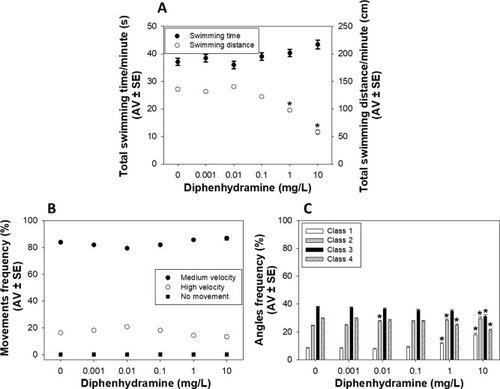Fig. 2
- ID
- ZDB-FIG-220705-26
- Publication
- Barreto et al., 2022 - Assessment of diphenhydramine toxicity - Is its mode of action conserved between human and zebrafish?
- Other Figures
- All Figure Page
- Back to All Figure Page
|
Fig. 2. Effects of 120 h diphenhydramine exposure on zebrafish larvae for total swimming time and distance (A); types of movements (B); and angles classes (C). Three types of movements were considered: no movement (0 mm/s); medium velocity (between 0 and 10 mm/s); and high velocity (above 10 mm/s). Four classes of angles were considered: class 1 – big amplitude angles (90-180°); classes 2 and 3 – medium amplitude angles (30-90° and 10-30°, respectively); and class 4 – small amplitude angles (0-10°). Data are expressed as average value (AV) ± standard error (SE) (n = 10). (*) Significant differences to control group (p < 0.05). These behavioral evaluations were considered for a period of 6 min of darkness. 2-column fitting image. |

